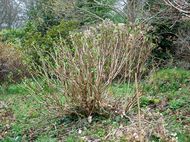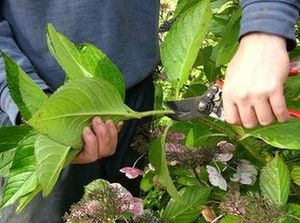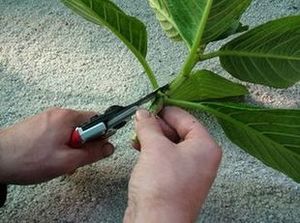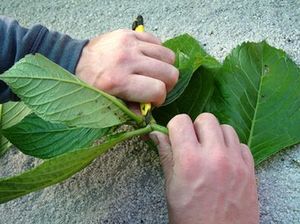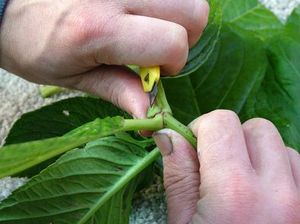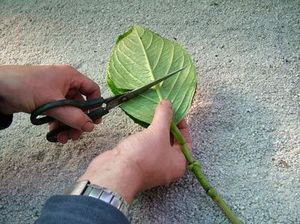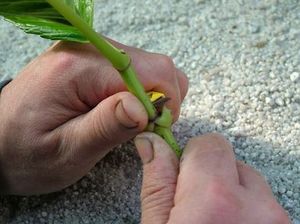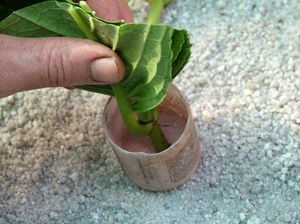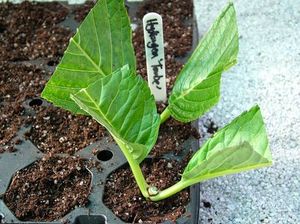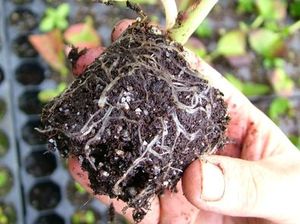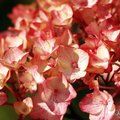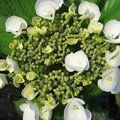- Shop Now
- Burncoose Specialities
- This Month
- Offers & Promotions
- RHS Chelsea Flower Show 2024
- 40 years at Burncoose
- Engage With Us
- Information, Help & Advice
- About Us & Our Services
- Terms & Conditions
- Log In / Register
Chapters
- Hydrangeas for everyone!
- Quick tour of hydrangea stocked - Video Tip
- Soil & Feeding
- Pruning Hydrangeas
- Pruning Hydrangeas - Video Tip
- Hydrangeas, keeping them blue - Video Tip
- Propagation
- Drying Flower Heads
- Drying hydrangea flower heads - Video Tip
- Popular Mopheads & Lacecaps
- Hydrangeas and other plants
- Further Reading
- Plants
Hydrangeas - Care Guide
Hydrangeas for everyone!
Hydrangeas are very easy to grow! Anyone and everyone can grow them and they will tolerate most soils and nearly all are very hardy. They will tolerate full sun or full shade but, as a general rule of thumb, some shade is particularly helpful especially for white hydrangeas and also for the clear blue varieties. You may find the blue varieties getting burnt to a pinky colour if given too much sunlight. I am referring to Hydrangea macrophylla or what is also referred to as the HORTENSIA HYDRANGEAS CONSISTING OF THE MOPHEAD AND THE LACECAP GROUPS. There are plenty of other species but the majority of the hydrangeas you know and see in gardens are macrophylla types. These advisory notes deal just with hortensia hydrangeas and not with other species.
Quick tour of hydrangea stocked - Video Tip
Soil & Feeding
A good garden loam is best for hydrangeas - neither too heavy nor too light. You often see hydrangeas in seaside or sandy locations where you will invariably find that they flower red or pink. Where you have a light sandy soil to contend with the soil should be improved by adding peat and leaf mould and/or well rotted manure. Very heavy clay soils can also be improved by adding sand and leaf mould. An alkaline pH of 6.5 is best for hydrangeas that are white or pink. For blue flowers you MUST have a much more acid soil and a pH of around 5 is ideal. We now sell a hydrangea colourant.
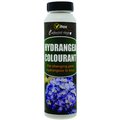 You might think that all peaty compost has an acidic content and that blue flowers will inevitably result from growing in peat. This is not necessarily the case. In the nursery we still have to treat all our blue varieties at least twice as the leaves emerge in April to ensure that their flowers turn out the correct colour. You can buy a bluing agent from most florists or you can use rusty nails or even tealeaves. So, although you can improve your soil with peat, you may still need to use a bluing agent to be certain of getting the best results especially with strong blue flowered forms.
You might think that all peaty compost has an acidic content and that blue flowers will inevitably result from growing in peat. This is not necessarily the case. In the nursery we still have to treat all our blue varieties at least twice as the leaves emerge in April to ensure that their flowers turn out the correct colour. You can buy a bluing agent from most florists or you can use rusty nails or even tealeaves. So, although you can improve your soil with peat, you may still need to use a bluing agent to be certain of getting the best results especially with strong blue flowered forms.
One of the results of a hydrangea's ability to change colour is that identification of a particular variety can be difficult on acidic soil as the plant may change colour completely if planted somewhere else.
Fertiliser in spring is helpful but do not overdo this as you will encourage too much lush growth and too few flowers.
Pruning Hydrangeas
Hydrangeas genuinely enjoy being cut back hard. If they get tall and straggly with increasingly small flowers cut them back to say 12-inches above ground level in autumn or very early spring. Do not however expect much in the way of flowers immediately. When the flowers come they may well be rather larger than the previous ones but it does take time for them to rejuvenate themselves. You will however end up with a much more vigorous plant which will be better shaped and with improved flowers.
People often get confused about when and how to prune hydrangeas. The answer is that you should always prune out the old dead flowers but the time to do this is in March when the sap is only just starting to rise. For best results cut back the stem only to the first pair of good buds. This may take you back a little way down the stem and may mean removing one or two buds closer to the old flower. Where you have too many stems which are too thick by all means prune some of them out completely. What you must avoid however is pruning too hard where you would effectively be removing the flower buds for the forthcoming season.
Pruning Hydrangeas - Video Tip
Hydrangeas, keeping them blue - Video Tip
Propagation
Back to Top Hydrangeas are very easy to propagate even for complete amateurs and cuttings can be taken at more or less any time of the year when the plant is in growth. Hydrangea cuttings take only a few weeks or so to root if taken in the summer months. Simply cut off a shoot down to the first node on the stem, remove all but a couple of leaves at the tip and ensure that the cut at the first node is made with a sharp knife so that it is clean and even. Then dip the cutting in hormone rooting power or liquid and insert it into a mixture of peat and sand with some bottom heat. Small plant propagator kits are ideal for this. The cuttings need to be kept well watered and in a humid state but do watch out for mould or botrytis forming on any older or dead leaves. Once the cutting has rooted pot it on into a 1 litre pot and over winter it when dormant in a cool greenhouse in its first year. With one more potting on in the following summer your plant will probably be fit to plant out by the autumn.
Drying Flower Heads
It is very easy to cut and dry hydrangea flowers. If done with care and if they are dried slowly in a normal environment rather than being dried quickly in somewhere very hot and dry they will retain at least some of their colour. One of the questions is when exactly to do the cutting as many of the dark reds and purples do change colour a great deal as autumn approaches. Some of the whites turn a delicate shade of green and it is this colour which it may well be preferable to retain.
As you would expect there are some varieties which are better for drying than others. The best varieties for drying are probably ‘Altona’, ‘Europa’, ‘Hamburg’, ‘Preziosa’, ‘Grayswood’ and ‘Libelle’. You can of course also spray dried hydrangea flowers for Christmas and perhaps mix them in a seasonal flower arrangement with holly, skimmia berries or rose hips. They sit very well with bluish conifer as well.
Drying hydrangea flower heads - Video Tip
Best done in September
Popular Mopheads & Lacecaps
The most popular mophead varieties grown today are listed below.
- Altona
- Ayesha - odd shaped florets with a distinct fragrance
- 'Benelux'
- Enziandom
- Europa
- Generale Vicomptesse de Vibraye
- Hamburg
- Joseph Banks
- King George
- Mirai
- Mme Mouillere
- Nigra
- Nikko Blue
- Soeur Therese
Similarly these are the best or most popular lacecaps - in our opinion!
- Blue Wave
- Geoffrey Chadbund
- Hobella
- Lanarth
- Libelle
- Taube
- Tricolor
- Veitchii
Hydrangeas and other plants
Hydrangeas are very versatile plants. They can be grown successfully in large tubs on the patio or they can be grown as key summer features in the garden. However they can also be incorporated successfully into summer flowering borders.
They mix well with spiraea, fuchsia or complement rhododendrons in extending the season. Hydrangeas provide an excellent backdrop to astilbes, hostas, hemerocallis or phlox with a variety of different other contrasts. Blue agapanthus and blue hydrangeas go well together. The autumn colour on Japanese maples complements the fading colour range of Japanese hydrangeas. The yellows and reds of the acers contrast with the blues and greens of the hydrangeas.
Further Reading
Further reading on the Caerhays website, a lecture about Hydrangea by Charles Williams, Burncoose Nurseries.
Further reading and images in the Caerhays Garden Diary - Hydrangea .




